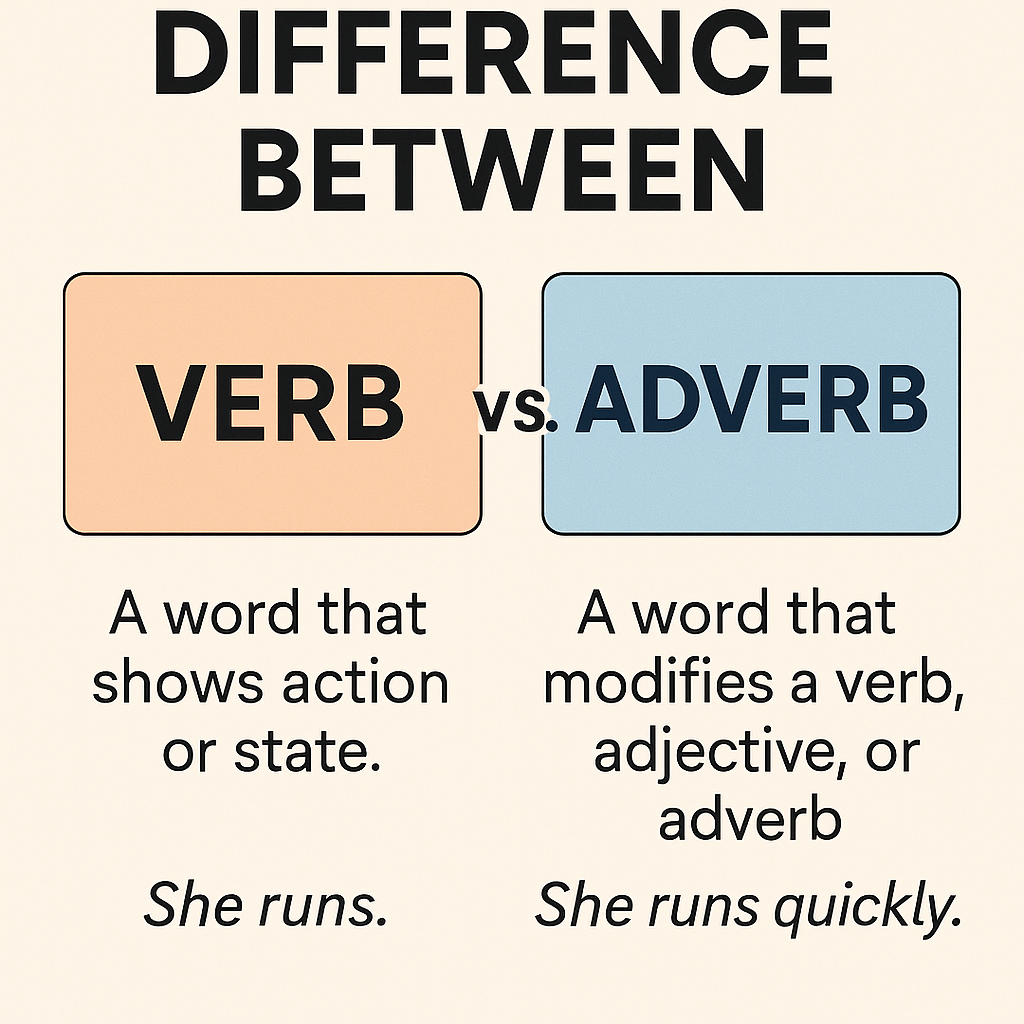Difference Between Adverb and Verb
Understanding the Difference Between an Adverb and a Verb
In English grammar, verbs and adverbs play crucial roles in sentence structure, but they serve very different purposes. Understanding the difference between them is essential for writing and speaking clearly.
What is a Verb?
A verb is a word that expresses an action, occurrence, or state of being. It is one of the main parts of a sentence, typically forming the predicate.
Examples of Verbs:
- She
runsevery morning. (action) - He
becamea doctor. (occurrence) - They
arehappy. (state of being)
What is an Adverb?
An adverb is a word that modifies a verb, adjective, or another adverb. It provides more information about how, when, where, or to what extent something happens.
Examples of Adverbs:
- She runs
quickly. (modifies the verb "runs") - He is
veryhappy. (modifies the adjective "happy") - They arrived
late. (modifies the verb "arrived")
Key Differences at a Glance
| Feature | Verb | Adverb |
|---|---|---|
| Function | Shows action or state | Modifies verb, adjective, or adverb |
| Examples | run, eat, is, think | quickly, very, yesterday, always |
| Role in Sentence | Main part of the predicate | Adds detail or description |
| Changes Form | Changes with tense, number, etc. | Usually does not change form |
Examples in a Sentence
- Verb: She
dancesbeautifully. — "dances" is the verb (shows action). - Adverb: She dances
beautifully. — "beautifully" is the adverb (tells how she dances).
Conclusion
While both verbs and adverbs are vital to sentence construction, they serve very different roles. A verb tells us what is happening, while an adverb tells us more about how, when, or where it happens. Recognizing this difference will help you improve your grammar and express your thoughts more clearly.
